
Lehrgebiet: Theoretische Informatik und künstliche Intelligenz
Büro: 01.214
Labor: 04.105
Telefon: +49 208 88254-806
E-Mail:
🛜 http://lab.iossifidis.net
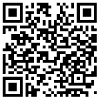
Ioannis Iossifidis studierte Physik (Schwerpunkt: theoretische Teilchenphysik) an der Universität Dortmund und promovierte 2006 an der Fakultät für Physik und Astronomie der Ruhr-Universität Bochum.
Am Institut für Neuroinformatik leitete Prof. Dr. Iossifidis die Arbeitsgruppe Autonome Robotik und nahm mit seiner Forschungsgruppe erfolgreich an zahlreichen, vom BmBF und der EU, geförderten Forschungsprojekten aus dem Bereich der künstlichen Intelligenz teil. Seit dem 1. Oktober 2010 arbeitet er an der HRW am Institut Informatik und hält den Lehrstuhl für Theoretische Informatik – Künstliche Intelligenz.
Prof. Dr. Ioannis Iossifidis entwickelt seit über 20 Jahren biologisch inspirierte anthropomorphe, autonome Robotersysteme, die zugleich Teil und Ergebnis seiner Forschung im Bereich der rechnergestützten Neurowissenschaften sind. In diesem Rahmen entwickelte er Modelle zur Informationsverarbeitung im menschlichen Gehirn und wendete diese auf technische Systeme an.
Ausgewiesene Schwerpunkte seiner wissenschaftlichen Arbeit der letzten Jahre sind die Modellierung menschlicher Armbewegungen, der Entwurf von sogenannten «Simulierten Realitäten» zur Simulation und Evaluation der Interaktionen zwischen Mensch, Maschine und Umwelt sowie die Entwicklung von kortikalen exoprothetischen Komponenten. Entwicklung der Theorie und Anwendung von Algorithmen des maschinellen Lernens auf Basis tiefer neuronaler Architekturen bilden das Querschnittsthema seiner Forschung.
Ioannis Iossifidis’ Forschung wurde u.a. mit Fördermitteln im Rahmen großer Förderprojekte des BmBF (NEUROS, MORPHA, LOKI, DESIRE, Bernstein Fokus: Neuronale Grundlagen des Lernens etc.), der DFG («Motor‐parietal cortical neuroprosthesis with somatosensory feedback for restoring hand and arm functions in tetraplegic patients») und der EU (Neural Dynamics – EU (STREP), EUCogII, EUCogIII ) honoriert und gehört zu den Gewinnern der Leitmarktwettbewerbe Gesundheit.NRW und IKT.NRW 2019.
ARBEITS- UND FORSCHUNGSSCHWERPUNKTE
- Computational Neuroscience
- Brain Computer Interfaces
- Entwicklung kortikaler exoprothetischer Komponenten
- Theorie neuronaler Netze
- Modellierung menschlicher Armbewegungen
- Simulierte Realität
WISSENSCHAFTLICHE EINRICHTUNGEN
- Labor mit Verlinkung
- ???
- ???
LEHRVERANSTALTUNGEN
- ???
- ???
- ???
PROJEKTE
- Projekt mit Verlinkung
- ???
- ???
WISSENSCHAFTLICHE MITARBEITER*INNEN
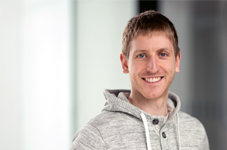
Felix Grün
Büro: 02.216 (Campus Bottrop)

Marie Schmidt
Büro: 02.216 (Campus Bottrop)
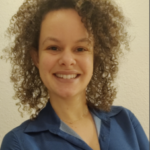
Aline Xavier Fidencio
Gastwissenschaftlerin

Muhammad Ayaz Hussain
Doktorand
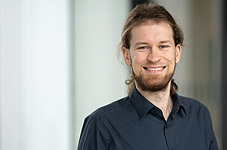
Tim Sziburis
Doktorand

Farhad Rahmat
studentische Hilfskraft
GOOGLE SCHOLAR PROFIL
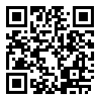
Proceedings Articles
Noth, Sebastian; Schrowangen, Eva; Iossifidis, Ioannis
Using ego motion feedback to improve the immersion in virtual reality environments Proceedings Article
In: ISR / ROBOTIK 2010, Munich, Germany, 2010.
Abstract | BibTeX | Schlagwörter: Autonomous Robotics, head tracking, Simulation, virtual reality}
@inproceedings{Noth2010,
title = {Using ego motion feedback to improve the immersion in virtual reality environments},
author = {Sebastian Noth and Eva Schrowangen and Ioannis Iossifidis},
year = {2010},
date = {2010-01-01},
booktitle = {ISR / ROBOTIK 2010},
address = {Munich, Germany},
abstract = {To study driver behavior we set up a lab with fixed base driving simulators. In order to compensate for the lack of physical feedback in this scenario, we aimed for another means of increasing the realism of our system. In the following, we propose an efficient method of head tracking and its integration in our driving simulation. Furthermore, we illuminate why this is a promising boost of the subjects immersion in the virtual world. Our idea for increasing the feeling of immersion is to give the subject feedback on head movements relative to the screen. A real driver sometimes moves his head in order to see something better or to look behind an occluding object. In addition to these intentional movements, a study conducted by Zirkovitz and Harris has revealed that drivers involuntarily tilt their heads when they go around corners in order to maximize the use of visual information available in the scene. Our system reflects the visual changes of any head movement and hence gives feedback on both involuntary and intentional motion. If, for example, subjects move to the left, they will see more from the right-hand side of the scene. If, on the other hand, they move upwards, a larger fraction of the engine hood will be visible. The same holds for the rear view mirror.},
keywords = {Autonomous Robotics, head tracking, Simulation, virtual reality}},
pubstate = {published},
tppubtype = {inproceedings}
}
